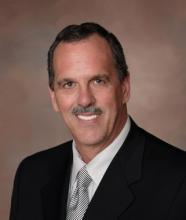The US Government Accountability Office (GAO) released a study on June 24, 2013, calling for "action" to address higher use of anatomic pathology services by providers who "self-refer" (i.e., those that have ownership positions in pathology labs). The report suggested that profit and not science drove utilization, including that of special stains. The relationship between luminal gastroenterology and pathology has been close since the beginning of flexible endoscopy and is inherent to excellent patient care and management.
As we began to diagnose predictive conditions (e.g., dysplasia) in addition to endpoint disease (e.g., cancer), the need for communication and closer cooperation became even more important. Endoscopists can help the pathologist with disease context and demographic information, allowing a more exact choice of histologic tools to aid diagnoses. In this article, I teamed up with a pathologist from a large independent GI group to explore these areas of potential controversy.
John I. Allen, M.D., M.B.A., AGAF, Special Section Editor
Gastroenterologists have long enjoyed a close working relationship with gastrointestinal (GI) pathologists as much of our endoscopic work is accompanied by biopsies. Excellent communication between the endoscopist and pathologist is critical for maximizing the diagnostic value of the biopsy and leads to an environment where the integrated team adds substantial value to patient health outcomes.1
During the last decade, a number of community gastroenterologists have added pathology services to their practices as the enhanced communication resulting from such integration improves patient care in both qualitative and quantitative ways. For example, reduced time from biopsy to patient reporting minimizes the patient’s anxiety as they await results. The development of special GI pathology expertise within the practice aids the gastroenterologist in his/her understanding of the pathology report.2
Business arrangements for in-house pathology vary and are beyond the scope of this article. These will be covered in subsequent publications in the Practice Management Toolbox.
The Centers for Medicaid and Medicare Services (CMS) prohibit physicians from referring patients for designated health services delivered by entities in which they or a family member have a financial relationship. These proscriptions are commonly referred to as Stark Laws. Anatomic pathology services, with Healthcare Common Procedure Coding System (HCPCS) codes in the 883xx family, are an exempted service. The primary code is 88305 and encompasses any biopsy taken by endoscopy, colonoscopy, or sigmoidoscopy. Add-on codes for additional studies are 88312, 88313, and 88342.
In June 2013, the United States Government General Accountability Office (GAO) issued a report in response to requests from several Congressmen concerning the increased use of anatomic pathology services by providers who self-refer to pathology labs owned and operated by their practices.3 The report analyzed expenditures for Medicare Part B services by using the above stated HCPCS codes from 2007 to 2011. They found an increase of 5.9% annually, and the rate of anatomic pathology billing to Medicare from dermatology, urology, and GI practices that owned pathology labs was significantly higher compared with those practices that did not self-refer. Both the rate of biopsies (related to procedures) and the numbers of special stains were higher, leading the GAO to recommend that CMS both analyze these trends directly and potentially limit such self-referral. To date, the Secretary of Health and Human Services has rejected these recommendations.
Fellowship training in GI medicine encourages GI pathology training so that the gastroenterologist can understand the language of pathology. Even with this training, pathology reports can be confusing. The pathologist also needs to understand the language of the gastroenterologist. Incorporating pathologists within the practice helps translate the esoteric language of pathology into the clinical language of the gastroenterologist.
Treating a disease at its earliest manifestation is the most effective point of intervention. Therefore, an important objective of medicine is to find disease in its nascent form or, if it is neoplastic, in its precursor form before it is capable of spreading. Pathology evolved to identify and detect these early manifestations of disease. The transformation of pathology from a specialty that confirms a diagnosis after a disease is fully manifest to a specialty that identifies a population at risk conferred an additional mandate on the pathologist so that the pathologist is called on to make a diagnosis earlier and earlier in the diagnostic cascade. The integration of both specialties into a single team maximizes communication and minimizes confusion.
The diagnostic algorithm begins with the standard stain
The diagnostic algorithm for rendering a complete surgical pathology interpretation begins with the pathologist examining the initial slide stained with H&E. This stain differentiates cytoplasmic and nuclear detail and allows a morphologic interpretation (i.e., "what does the lesion look like?"). At this level, the pathologist uses heuristic rules of thumb to make an approximate diagnosis. The experienced and well-trained pathologist knows that morphology only gives an 80%-85% confidence level in diagnosis. To achieve diagnostic accuracy and reproducibility approaching 100%, the trained pathologist is expected to triage the specimen and determine the need for any additional studies. In this modern setting, heuristic rules of thumb that are based on morphology are anachronistic, whereas establishing the correct diagnosis is paramount. This need is recognized in CMS regulation 80.6.5 that allows the pathologist to use whatever special studies are necessary as long as certain criteria are met.4





